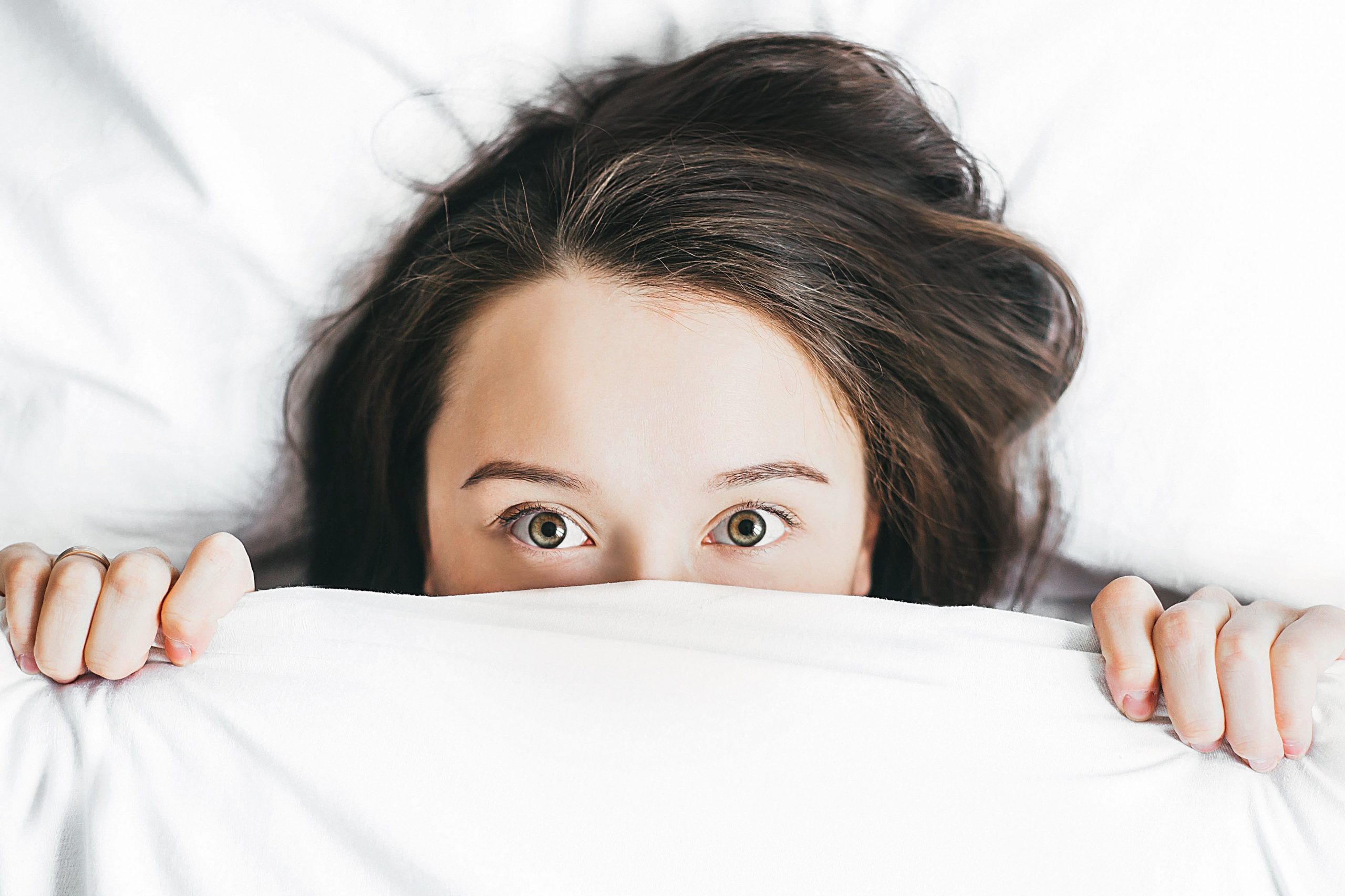[vc_row][vc_column][vc_column_text]Insomnia is one of the most common sleep disorders in the world. It’s incredibly burdening for some and just a nuisance to others. Whatever your case may be, we have prepared a detailed article on the most important insomnia statistics out there.
The web offers plenty of data on sleep disorders, so we included as many health-related stats as we could find. This is all to help you understand insomnia and to appreciate the benefits of sleep better. We hope that, by knowing more about sleep deprivation, you will be able to cure it or find ways of coping with the disorder.
Below are 10 statistics we thought you’d like the most.
The Top 10 Interesting Facts About Insomnia
- Approximately 50% of all adults experience occasional bouts of insomnia.
- Insomnia is more common in working women (27%) than in working men (20%).
- Around 44% of older people have problems with insomnia at least a few times per week.
- Sleep deprivation affects 20% of the world’s population.
- Approximately 25% of children have behavioral insomnia.
- A staggering 1 in 4 Americans develops insomnia every year.
- Lack of sleep among the US workforce is costing the economy around $411 billion.
- A whopping 76% of the population of Brazil has at least one sleep disorder.
- Almost 80 years ago, 8 hours of sleep was the average, while today, it’s only 6.8 hours.
- Those with insomnia have 20 times more chances of having a panic disorder.
General Insomnia Facts and Statistics You Should Know About
1. Approximately 50% of all adults experience occasional bouts of insomnia.
(Cleveland Clinic)
This clearly shows how widespread insomnia is. Every second adult will experience it, but only one in every ten will develop chronic insomnia. So if you happen to suffer from insomnia at the moment, you might not have it for too long! That’s why it’s essential to learn the difference between acute and chronic insomnia. Moreover, insomnia facts reveal that the disorder is more common in older people.
2. As much as 80% of women have insomnia while pregnant.
(NCBI)
Insomnia is fairly common during pregnancy, but that’s still one of those lesser-known facts of insomnia or pregnancy for that matter. If you want to know more facts about insomnia, you will be interested to learn that many sleep disturbances are fairly common during pregnancy, so there’s nothing to worry about. However, it’s advisable to treat the symptoms early on to avoid any adverse outcomes during pregnancy.
3. Insomnia is more common in working women (27%) than in working men (20%).
(Evolve Brain Training)
Besides the fact that women tend to experience insomnia quite often during pregnancy, they are also more likely than men to develop the disorder. Doctors believe that this noticeable difference in insomnia demographics might be related to female hormones. Many sleep issues are more prevalent during significant hormonal changes in a woman’s life, which might be enough to explain this difference.
4. Around 35% of people with insomnia have a family history of the disorder or other sleep issues.
(Wiley)
It seems that genetic heritage plays a role in insomnia. According to research, family history is a potential risk factor for insomnia, so you should check if your parents had any problems with the disorder. However, the research on the subject is still not conclusive enough to categorize family history as one of the definite causes of insomnia.
5. More than 30% of drug overdoses involve benzodiazepine — a common prescription medication for anxiety or insomnia.
(National Institute on Drug Abuse)
Insomnia medication, as per some interesting facts, might lead to a drug overdose. However, it mostly has to do with the drug combination itself. Benzodiazepines — or benzos as they are commonly known — tend to sedate people and suppress their breathing, which can lead to an overdose if the person takes some opioids as well.
6. Between 40–50% of people older than 60 have difficulty sleeping.
(NCBI)
We already stated that insomnia is more common in older people. Still, these insomnia statistics suggest that it’s far more common than many believe, as almost half of older adults have insomnia. What’s more, there’s a 5% annual insomnia incidence rate for those above the age of 65.
7. Around 44% of older people have problems with insomnia at least a few times per week.
(National Sleep Foundation)
Older adults definitely have it the worst when it comes to insomnia, and the reasons vary. In most cases, it’s due to the changes in sleep patterns that come with age. Unfortunately, these insomnia stats and facts also show that the cause of this might be a medical condition or a psychiatric one.
It’s important to talk to your doctor if you are in a situation like this to see what may be causing your insomnia. Even if the cause isn’t a medical condition, your doctor can still help you solve the problem.
8. Sleep deprivation affects 20% of the world’s population.
(India Today)
In essence, every fifth human being is not getting enough sleep. This isn’t the only problem, as the sleep deprivation statistics for 2017 also show that many of these people resort to sleeping pills, which might indicate the existence of a sleep disorder.
9. People with children tend to have more problems with insomnia than those without kids.
(Sleep Foundation)
According to the latest data, around 66% of parents exhibit insomnia symptoms, compared to 54% of those without children.
10. As many as 40–50% of women in menopause experience symptoms of insomnia.
(NCBI)
When it comes to the differences in the occurrence of insomnia in men vs women, statistics show that hormones are the main reason behind the higher number of insomnia cases among women. This isn’t surprising given the intensity of hormonal changes during menopause.
11. Around 9.4% of adolescents have insomnia.
(NCBI)
Insomnia is more common in adults, but it also affects the younger population, at least to an extent. What’s more, adolescents with insomnia are at a higher risk of developing depression as well.
12. Approximately 25% of children have behavioral insomnia.
(Alaska Sleep Clinic)
According to these insomnia statistics from 2018, even very young kids can have insomnia, or more specifically, behavioral insomnia. Children with behavioral insomnia tend to wake up during sleep frequently, and they usually have trouble falling asleep. They become dependent on their parents and cannot go to sleep without them. However, there are many treatment options for this issue.
The Most Important Insomnia Statistics in America
13. Roughly 30% of the population has a sleep disruption of some sort.
(SleepFoundation)
The National Institutes of Health also states that around 10% of the population has one or more symptoms related to insomnia. What’s interesting is that most of their data show that younger people are more prone to having insomnia than adults. Namely, 68% of those aged 18–29 experienced symptoms of insomnia, while the disorder affected 59% of those aged 30–64, and only 44% of those older than 64 had sleeping problems.
14. A staggering 1 in 4 Americans develops insomnia every year.
(Science Daily)
In other words, 25% of Americans get insomnia annually. However, about 75% of them eventually recover from the disorder and get back to a healthy sleeping pattern. Unfortunately, 21% remain poor sleepers, while around 6% develop chronic insomnia.
15. The lack of sleep among the US workforce is costing the economy around $411 billion.
(RAND)
According to the latest study on sleep deprivation, the statistics suggest that 1.2 million working days are lost in America every year. Furthermore, the cost represents 2.28% of the GDP. And other countries aren’t faring any better either. The economic cost of insomnia and lack of sleep equals 1.86% of the GDP of the UK, 1.56% of the GDP of Germany, 1.35% of the GDP of Canada, and 2.92% of the GDP of Japan.
16. Insomnia costs the US healthcare system more than $15 billion per year.
(NCBI)
Besides costing the economy more than $400 billion, insomnia also has a major effect on the US healthcare system. These insomnia statistics show that the sleep disorder costs the healthcare system an additional $100 billion in indirect costs, like self-medication.
17. 17% of Americans spend 60 hours per week in their offices.
(Consumer Reports)
These statistics might only be related to work, but they show why people spend less time sleeping. Overworking is the usual reason why Americans are getting less sleep than they should. The problem here is that those that end up having sleep issues, quickly show that insomnia is affecting their work performance. In essence, the sleep statistics show us that, by working more, you’re not necessarily more productive.
18. People in the US tweet about insomnia far more than people in any other country in the world.
(Daily Mail)
The data comes from the UK’s Daily Mail, and their research shows which countries care the most about insomnia. The data reveals that 83,952 people in the US tweeted about their troubles with insomnia. The UK, on the other hand, had 14,580 people tweeting about their sleeping disorder.
Crucial Insomnia Statistics in the World
19. Around 15% of people in China have insomnia.
(Plos One)
The sleep statistics reveal that the Chinese have a lot fewer problems with insomnia or the symptoms relating to it. Unfortunately, the reason why Chinese people sleep better than people in the Western world remains a mystery.
20. 76% of the population of Brazil has at least one sleep disorder.
(Science Direct)
Unfortunately, there are no proven facts on the existence of people with insomnia in Brazil, as studies have only looked into sleep disorders in general. However, these facts make Brazil one of the countries with the highest rates of sleep disorders in the world.
21. Almost 80 years ago, 8 hours of sleep was the average, while today it’s only 6.8 hours.
(Dreams)
The data clearly shows how little sleep people get in the modern world. The worst thing about it is that the worldwide average is less than the recommended seven to nine hours of sleep adults should get.
However, according to the global statistics on insomnia, there’s also a drastic difference from country to country. The data on sleep reveals that, in Japan, people sleep almost six hours on average, while those in New Zealand sleep for seven and a half hours a day.
Statistics on the Consequences of Insomnia
22. Adults with insomnia have 28% more chances to develop type 2 diabetes.
(NCBI)
Based on the most important facts on insomnia, people with the disorder are more than just slightly more likely to get diabetes. That makes it more critical for people with common insomnia problems to visit their doctor to see whether or not they have diabetes.
23. A whopping 83% of people with depression also have symptoms of insomnia.
(NCBI)
This overwhelming number indicates that there’s a clear connection between insomnia and depression. The same research also tells us that around 40% of young adults suffering from depression show signs of hypersomnia — a condition where a person struggles to stay awake during the day.
24. People with chronic insomnia are 4 times more likely to have hallucinations.
(NCBI)
One of the well-known facts about insomnia is that the sleep disorder can cause hallucinations. However, these stats paint a much worse picture. People with milder sleep problems have two to three times more chances to hallucinate.
25. Those with insomnia have 20 times more chances of having a panic disorder.
(Get Sleep)
If hallucinations were more common due to insomnia, what can we say about panic disorders? If you have problems with insomnia, it’s more than vital to start finding ways of getting more sleep to preserve your mental health.
FAQ
What is insomnia?
Insomnia is a well-known sleep disorder where people have trouble falling asleep and sleeping. In general, people with insomnia tend to be sleepy most of the day as they rarely get enough sleep. Naturally, they also have low energy and are generally irritable and in a depressed mood.
The problem with insomnia is that it increases the risk of car accidents, for instance, and it also causes troubles at work, for most people. What’s more, the longevity of the disorder is quite varied. For some people, it can last for only a few days, while for others, it can persist for weeks. It can also be long-lasting, affecting people for longer than a month.
What causes insomnia?
Many problems can cause insomnia, but it’s generally suggested that the usual culprit is stress. However, many sleeplessness facts suggest there are many more causes of insomnia. The most common ones outside of stress are anxiety, depression, specific health problems, medications (some prescription drugs can interfere with your sleep), other sleep disorders, hectic work or travel schedules, poor sleep habits, and overeating late in the evening. With so many potential causes, it’s vital to take a good look at your habits and see what the culprit might be. Then you can work on eliminating the problem.
How is insomnia diagnosed?
In most cases, a doctor diagnoses insomnia based on a physical exam and questions about medical and sleep histories of the patient. The physical exam is usually pretty standard, but in some cases, it involves a blood test to determine if some specific conditions are causing the symptoms. In rare cases, a doctor might suggest a sleep study. However, this is usually suggested only when the cause remains unclear.
How many people have insomnia?
This is probably the main question you have right now. However, the truth is that we can’t give you the answer as no organization collects sleep statistics for the entire world. And, as you’ve seen in this article, the prevalence of the disorder per country varies a lot.
We also have to take the data with a grain of salt, as not all cases are the same. For example, some involve people with only a single symptom. In contrast, others have several of them that have lasted for a while. All in all, the general estimate is that one in three people have problems with insomnia.
How do I cure my insomnia?
Unfortunately, there is no single popular medication for insomnia that’s 100% effective at curing it. However, there are things that you can do that are bound to help you beat it. For instance, the general advice is to try and wake up at the same time every day. This will help train your body and get you to be consistent with your sleep.
Other suggestions include eliminating alcohol, caffeine, and nicotine; taking fewer naps; no eating or drinking before going to bed; exercising regularly; reducing stress, and making your sleeping environment more comfortable.
Key Takeaways
So there you have it, all the important insomnia disorder statistics you need to know. We covered the general facts and stats on the disorder, some less important ones, but also some interesting facts you probably never heard before.
What’s more, we also answered some of the crucial questions you might have about insomnia or statistics on this prevalent health issue. They are more than likely to help you out if you already have issues with the disorder.
In the end, we are positive that everything you have seen here will change what you know about the sleep disorder and especially about any insomnia statistics you might have already come across.
Sources:
- Alaska Sleep Clinic
- Cleveland Clinic
- Consumer Reports
- Daily Mail
- Dreams
- Evolve Brain Training
- Get Sleep
- India Today
- National Institute on Drug Abuse
- National Sleep Foundation
- NCBI
- NCBI
- NCBI
- NCBI
- NCBI
- NCBI
- NCBI
- NCBI
- Plos One
- RAND
- Science Daily
- Science Direct
- SleepFoundation
- SleepFoundation
- Sleep Foundation
- Wiley
[/vc_column_text][/vc_column][/vc_row]



